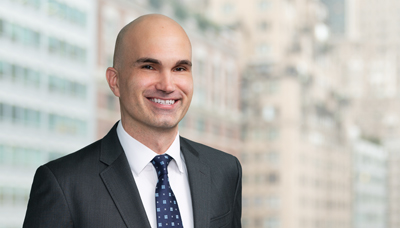The power dynamic between limited partners and their general partner counterparts is shifting as GPs compete for fewer allocation dollars amid lower valuations, rising interest rates and limited exit opportunities. With LPs gaining leverage, pension funds, which make some of the largest commitments to private funds, may have more negotiating power than most.
This changing dynamic will have significant implications for investors, sponsors and service providers, particularly as economic uncertainty persists into the latter half of 2023. That's where Barnes & Thornburg's latest Investment Funds Outlook report, which surveyed 125 LPs, sponsors and service providers in February, comes in.
Here are five key takeaways that can help inform investment and fund management decisions in the year ahead.
Fund terms (and structures) are changing
LPs experiencing the "denominator effect" are increasingly particular about where they direct their money.
As a result, three-quarters of respondents to our survey (including GPs, LPs, and service providers) expect changes in fund terms in 2023 that will benefit LPs. Among them: more LP-favorable key-person clauses and sponsor commitment requirements, and growing inclusion of no-fault divorce clauses where LPs can vote to end the investment period or term of the fund early or replace the GP or manager of the fund without cause. Most notably, 72% of LPs expect changes in how fund proceeds are distributed via fund waterfalls.
At the same time, certain alternative structures are experiencing a resurgence. Co-investments, for instance, are on the rise, and can improve deal terms — especially if LPs can flex their increased leverage to press for lower or even no fee co-investments. The use of side cars is increasing, too. These vehicles, which tend to include lower fees and may involve a limited subset of the fund's investments, can help set sponsors apart in a tight fundraising environment.
Transparency takes on added importance
Heightened transparency is another way GPs may seek to differentiate themselves in today's economic environment, as increased disclosure around fees, conflicts of interest and performance metrics give LPs more information to guide their investment decisions. This is particularly true for pension funds, whose capital tends to be tied up in closed-ended funds for long periods.
It tracks, then, that nearly 70% of survey respondents said they expect there will be more transparency and communication present in GP-LP relationships. This may entail LPs gaining more visibility into side letters — including recent requests from allocators asking fund sponsors for access to redacted side letters — as opposed to the standard compendium typically distributed to investors after a fund's final closing. In addition, the SEC's proposed private funds rule would require such advisers to provide investors with details on preferential treatment given to other investors.
LPs are pushing for transparency on other fronts as well. New data from the Institutional Limited Partners Association reveals that in 2022, 51% of LPs said fee and expense disclosure was a "must-have" in negotiations, up from just 19% in 2020.
ESG at the forefront
The appetite for ESG investing continues to grow, and pension funds are particularly interested. According to Morningstar research, state and municipal pension funds backed resolutions in favor of ESG investing roughly 88% of the time in 2022, compared with just 56% of general shareholders.
Yet, incorporating ESG may be one of the biggest discrepancies between GPs and LPs. In our survey, 90% of LPs view ESG implementation as a priority, while only half of GPs factor ESG into deal terms some (36%) or half (14%) of the time.
With that said, the burden of implementing ESG-related criteria — combined with increased regulatory scrutiny and reporting obligations around the world — may explain why both sides of the table are struggling to factor ESG into deal terms. For instance, a significant share of both groups said they would rarely or never incorporate these considerations into deal terms (more than a third of LPs (37%) and half of GPs).
Succession planning is highly valued by LPs, yet only 41% of GPs have such plans in place
Leadership transitions will only take on more importance amid ongoing economic uncertainty and pressure from LPs to ensure that key team members safeguard long-term continuity in investment decisions.
Pension funds, which tend to be longer duration investors, may find succession planning especially critical.
That could be a challenge for GPs, who may not have plans in place or have undertaken such a transition yet. Successful handovers can take years, particularly when LPs and other stakeholders want to spend time with new leaders well in advance of the transition date. However, nearly a third (32%) of GPs with a plan in place or in development anticipate their planning will take only six to 12 months — the top-ranked answer. Thirty percent put the estimated timeline at one to two years, while 22% anticipate wrapping within six months.
LPs and GPs aren't always aligned
It's no surprise that LPs and GPs remain misaligned in a number of key areas.
For instance, 71% of GPs said they expect to show more discipline toward long-term management of funds over the next year, while only 56% of LPs believe the same of GPs. Such discipline might involve an increased focus on the pace at which GPs are deploying capital and/or leverage, particularly in today's interest rate environment.
Fortunately, both groups express optimism when it comes to improving transparency in their relationships with each other and collaborating to reach ESG and sustainable development goals.
This is a step in the right direction, as alignment between LPs and GPs will be increasingly important in the future.
“Commentary: LP and GP Relations in Flux — 5 Key Takeaways” by Scott Beal and Kerry Potter McCormick was published in Pensions & Investments on October 4, 2023. Reprinted with permission.














